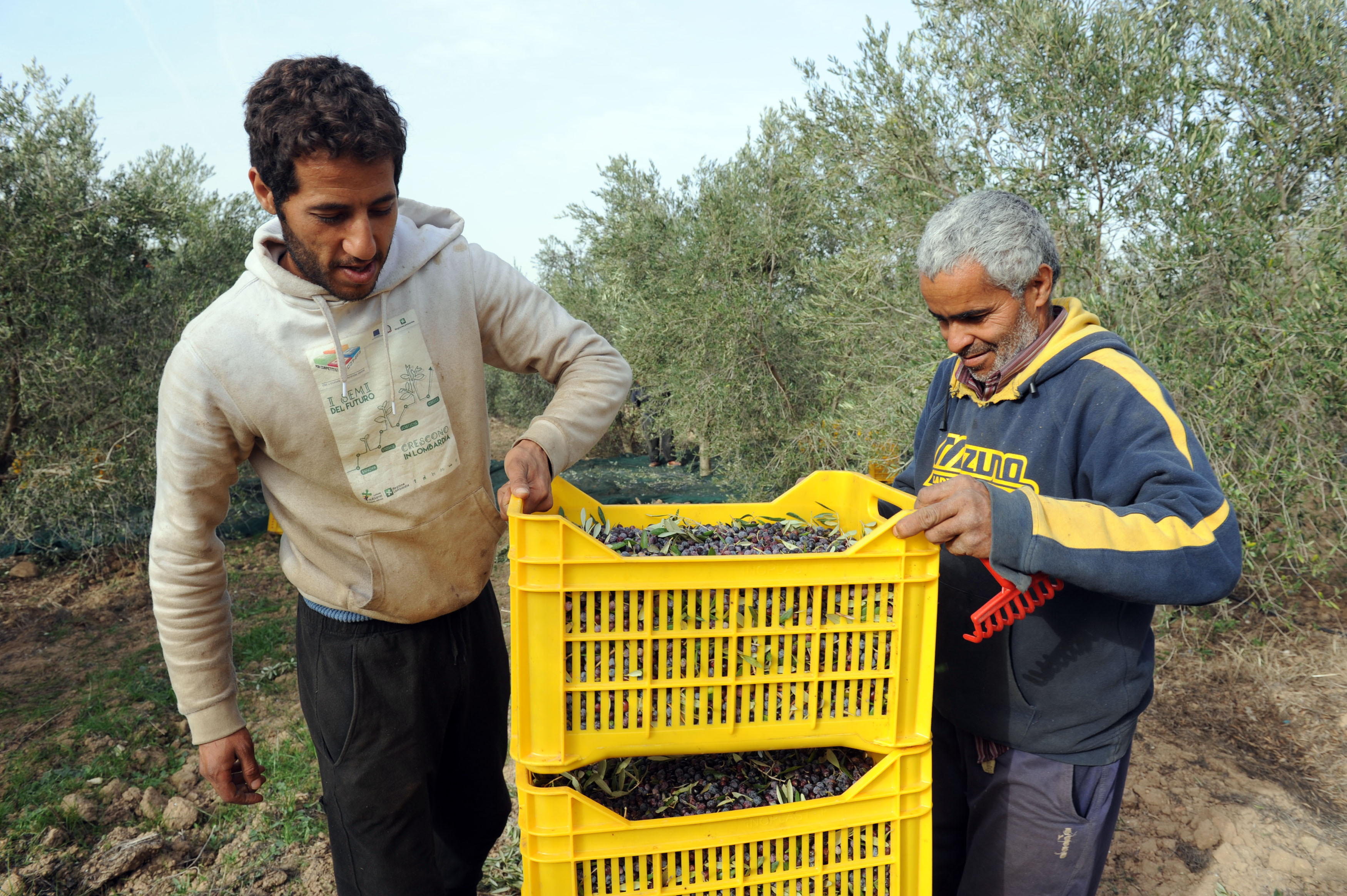New online course targets a better and safer olive oil industry

World Olive Tree Day is coming up and with it a chance to celebrate the importance of olive trees to people and the planet.
It’s also a good time to announce a new two-part course available on the FAO elearning Academy that seeks to improve quality, biosafety and resilience in the olive oil industry.
The first lesson centres around good agricultural, hygiene and manufacturing practices to produce a safe and authentic olive oil. The second lesson is dedicated to strengthening the industry’s resilience to COVID-19 challenges and future shocks.
The free online course offers certification – an internationally recognized digital badge – for those who pass the final exam.
It is in line with the Codex Alimentarius, or "Food Code", which is a collection of standards, guidelines and codes of practice to protect consumers’ health and promote fair practices in food trade.
Test your knowledge on biosafety in the olive oil industry here.
FAO partnered with the European Bank for Reconstruction and Development (EBRD) on the e-learning course.
For several years, the EBRD and FAO have been supporting the olive oil industries in Jordan, Morocco, Tunisia and the West Bank and Gaza Strip to improve oil quality, from field to shelf.
And in late 2020, the two organizations launched a joint COVID-19 package to help agribusinesses in the EBRD’s countries of operation cope with pandemic-related disruptions. This included challenges the olive oil industry faced during the crisis.
Food safety is everyone’s responsibility, especially food business operators, said Iride Ceccacci, Associate Director, Head of Agribusiness Advisory at the EBRD.
“We hope more olive oil companies see the economic advantages of applying food safety standards at every stage of the olive oil chain, from better cultivation and harvesting techniques to the timely transportation of olives, well organized mills and proper processing, storage and packaging,” she said.
She added that complying with safety and quality standards and getting certification “can boost companies’ credibility and help them, especially smaller operations, stay competitive by meeting the requirements of larger retailers and high-end export markets.”
Food safety and workplace safety
FAO Economist Lisa Paglietti said that the pandemic was an opportunity to reassess the importance of workplace safety, in addition to food safety.
“Companies can be better prepared for shocks and emergencies by investing in crisis response planning to protect the health and safety of their workforce, while also minimizing disruptions to their businesses,” she said.
“We wanted this course to be engaging and interactive, using straightforward language and practical examples of biosafety measures that all olive oil companies, from big operations to tiny family-run ones, can apply,” she added.
The course is currently available in English and will soon be translated into Arabic and eventually into Spanish and French, broadening its outreach.
People can access the course at any time. And the learning is self-paced.
The digital badge awarded upon successful completion of the exam certifies that the individual has acquired specific competencies related to international biosafety measures for olive oil.
The FAO elearning Academy provides learning opportunities and multilingual elearning courses for professionals working in food and nutrition security, social and economic development, and sustainable management of natural resources. The overall goal is to strengthen the capacity of member countries to achieve the 2030 Agenda for Sustainable Development.
Paglietti noted that while this was the first online course dedicated to COVID-19 and food safety issues in the olive oil industry, it could eventually be adapted to other agrifood sectors.
World Olive Tree Day on 26 November is a reminder that a focus on quality, be it for the olive oil industry or other agrifood industries, is good all around – for the economy, livelihoods, the environment and nutrition.
